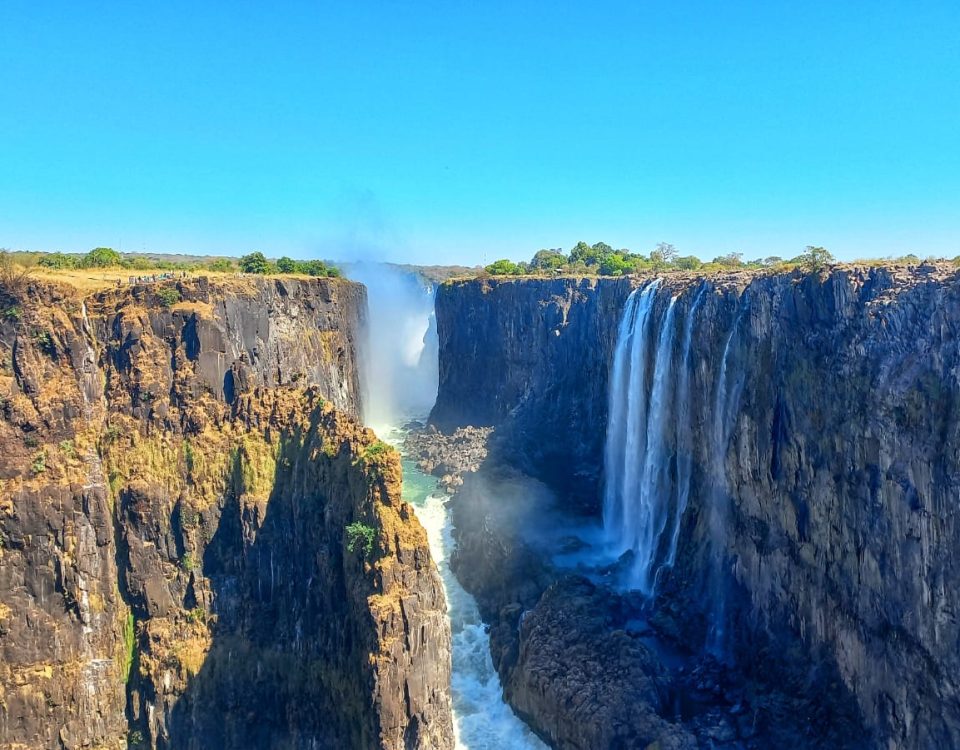Importance of Proper Standards and Structures in Applying Climate Finance

Action!
25th October 2022
The beginning of owning my story
31st December 2022As this year’s Conference of Parties (COP) of the UNFCCC (United Nations Framework Convention on Climate Change), also known as COP27, convenes in Sharm El Sheikh, Egypt, I find myself in deep thought about the ongoing climate change conversations online, the current climate crises in Kenya and the rest of the world. Much of what is being discussed is the adaptation and mitigation to climate change, climate reparations and climate justice; which as they are essential, are also more of an aftermath action.
While direct and indirect causes of climate change should be heavily tackled, the world at large is mostly focused on dealing with the current emergencies or issues that have cropped up such as supporting climate change refugees. I would say that I comprehend this focus – what good would it be to talk to my local community about climate change resulting from opaque governance, corruption, and other abuse of processes when their foremost thought is survival?
Corruption and Climate Change
Corruption – directly and indirectly, plays a huge role in climate change. Having expanded my career on environmental justice to include governance and anti-corruption, I am amazed at how I did not wholly comprehend how abuse of a public office for personal gain compounds to climate change. I could easily understand the social injustice aspect as the loss of public assets automatically translates to the potential resources to be gained by the public which are not available. Now, this is what a drought-stricken citizen would show interest in. While interacting minimally with corruption offenses in my environmental crime work days, it is notable how most corruption cases mostly involve pillaging of the county or public institution coffers, un-procedural procurement processes, and bribery (which to some large extent is seen as a norm in Kenya), while on the environmental, and transnational organized crime cases involves few being charged with corruption offences.
Corruption is opportunistic and powerful. To some extent, it may be seen as ‘quiet violence’ that affects the whole society regardless of the different arrears of work one is engaged in. In climate change, for example, would be that the funds for assisting with climate impacts are pilfered. In this space, there is also a need to look at conflicts of interest and undue influence on climate action by powerful industries that ultimately delay climate policy implementation. Reiterating words said by the president of Basel Institute on Governance, ‘anti-corruption measures is simply not just about corruption. It is a collective responsibility.’
COP27 and Accountability
One of the main focus areas at this year’s COP is ensuring adequate climate financing, which should ultimately trickle down to the citizens. Transparency International in its publication, Corruption Free Climate Finance: Strengthening Multilateral Funds noted that in 2018, climate action investments were estimated at $546 billion. Corruption threatens these investments. Therefore, having proper standards and structures is an important indicator to ascertain the effectiveness of climate finance as an adaptation measure and protecting the earth’s climate.
Notably, access to information on climate finance is not widely known to grassroots communities and the youth who can effect change. It has been unduly stated that Africa contributes just 4 per cent of global total greenhouse gas (GHG) emissions yet livelihoods in most parts of the continent are threatened by the climate crisis. It begs the question of whether countries that contribute the most are financing the loss and damage experienced as a result of climate change and whether the amount needed is accounted for and rightfully channelled where it is needed the most. Who needs to be held accountable for climate financing? Is it limited to public offices like the County, National government – which are held accountable under anti-corruption legislation like the Anti-corruption and Economics Act (ACECA), or would it also include a form of accountability to international organisations or local NGOs?
After the Paris Agreement
Every year, as the United Nations Climate Change Conference is held, countries or individuals pledge to support developing countries in climate mitigation and adaptation to the effects of climate change. This can be quite daunting, especially if you did not attend the conference and are not aware of who did what and whether the pledges were followed up after the COP.
Did you know at COP 21 held in Paris, France in 2015 – the renowned Paris Agreement, it was agreed that developed countries would continue their existing collective mobilization goal through 2025 in the context of meaningful mitigation actions and transparency on implementation? In addition, before 2025, the Conference of the Parties serving as the meeting of the Parties (CMA) to the Paris Agreement shall set a new collective quantified goal from a floor of USD 100 billion per year, taking into account the needs and priorities of developing countries.
Where do all these funds go to? Are there criteria for how the funds are applied? Unknowingly, most of these funds can end up in sticky hands and with people who have only their personal interests. The funds, which are for public benefit, end up being used for actions that do not serve to lessen climate impacts. Numerous developing countries are experiencing loss and damage as a result of the climate crisis, but what are the parameters for each country to receive the funding? Some individuals/organisations in developing countries can see climate finance as a way to fund their lives and not what it is intended for. Even though as developing nations we do deserve funds to support climate mitigation and adaptation projects, there needs to be mechanisms to determine what goes where and especially who benefits.
Climate Finance and Implementation
The UNFCCC definition of Climate Finance refers to “local, national or transnational financing—drawn from public, private and alternative sources of financing—that seeks to support mitigation and adaptation actions that will address climate change.” In this instance, we should also consider our own capabilities as a developing country to support climate change mitigation projects. Kenya is a global leader with a strong Climate Change Act of 2016 which houses the National Climate Change Action Plan (NCCAP), 2018-2022. Additionally, there is also the National Climate Change Response Strategy, 2010; the National Climate Change Framework Policy; the National Policy on Climate Finance; and the Green Economy Strategy and Implementation Plan. In tandem, the several anti-corruption legislation should lead us in making proper decisions on the governance aspects. We have very strong policies, frameworks and legislation but the challenge still remains in the implementation phase.
In conclusion, having effective governance structures to ensure that climate funds are applied appropriately, is a must. Based on how the governance structures are, mitigating, adapting and reducing causes of climate change will continue to remain a dream.
Co-authored with Mary Morrison.
Mary Morrison is a young vibrant, dynamic, and creative Advocate with an innate passion for environmental and wildlife protection and good governance. With a background in law and experience working as an environmental and governance advocate, she stands for environmental and social justice.
Featured image © Anthony Ochieng/ TonyWild




